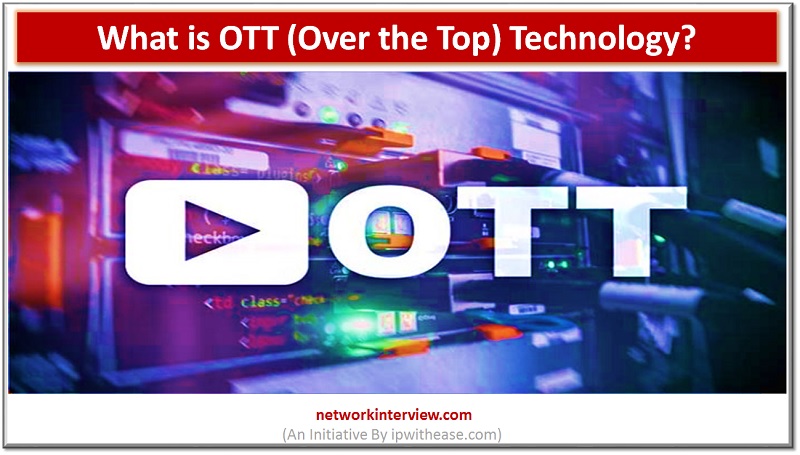
What is OTT? Over the Top Technology
Over the Top technology
The communication and transmission of data have become more secured, fast and convenient with the passage of time. With the advent of high speed Internet connection in most of the parts of the globe, it is now feasible to experience top notch content seamlessly in high resolution quality not just on your doorstep but on your own device.
Introduction
The seamless transmission of high speed data has been converted into a technology that has taken the online world by storm. It is something that we don’t know in terms of definition but experience everyday. It is a fact that we do not frequently ask the question, what is OTT (Over the Top) technology, despite the fact that we remain glued to renowned video streaming platforms accessible over smart TVs and mobile handsets.
So let us try to crack this dilemma and understand about OTT in a detailed way.
What is OTT (Over the Top)?
The term is basically referred to the film and television content delivered through a high speed Internet connection instead of a satellite or cable provider. The services provided by the OTT platforms are not accessible for free but are bundled at a certain fee. Some of the most common OTT platforms that one can access online include
- Netflix
- iTunes
- Amazon Prime
- HBO Now
Understanding What is OTT (Over the Top) Technology
It is a model of transmitting content based on the needs and demands of modern users. It is especially meant for the users who prefer to watch films and TV shows at their own convenience and can even prefer to binge watch the entire show right in one go. OTT platforms soared with the popularity and sharp growth experienced by Netflix. The technology of this sort helped the users to migrate from conventional old movies and TV shows and take deep interest in watching original content rightly meant for the licensed members only.
The best part of the content accessible at OTT platforms is that it has something for the people of every age-group. The content can be reached directly on web enabled television, or rather Internet-enabled devices, like Apple TV or Roku.
Transactional (VOD) Video on Demand
While defining what is OTT (Over the Top) technology, we cannot overlook TVOD or transactional video on demand services. One of the best examples of one such services is iTunes provided by Apple, that incorporated TV shows to its music offerings in the year 2005. The upload and streaming of the full length movies were started in the year 2006, followed by Video on-Demand services in the year 2013. The objective of starting this service was to deliver independent film-makers with a platform to sell new content and increasing up the members base on the basis of it simultaneously. The facilities offered to the members were taken to a new level by Amazon by prioritizing the package delivery services to its members with two-days delivery guarantee for the Amazon Prime Members.
Subscription (VOD) Video on Demand
The service denotes another reason why Over the top (OTT) technology is immensely popular these days. OTT platforms may seem like a new trend, but it’s foundation had been laid two decades back. The journey of Netflix began in the year 1998 in the form of DVD by mail service. After properly analysing the market and it’s new demands, it gradually entered the streaming service in the year 2007. The offering of the new shows propelled the viewership base providing different broadcasting options including time free content, binge watching, multiple viewings as well as downloading options.
The success of Netflix encouraged other companies to launch SVOD (streaming video on demand) services including Amazon Prime, Hulu, along with networks such as HBO, CBS and Showtime.
Conclusion
Defining what is OTT (Over the Top) technology covers a lots of aspects in terms of ever changing viewership demands and sources of entertainment, what is currently dedicated to a subscriber base can become dedicated to individual viewers in the future. The technology is trying to bring more customers in the market, resulting in ever increasing competition. But it is true that it is the customer that is going to reap the maximum benefits out of it!



